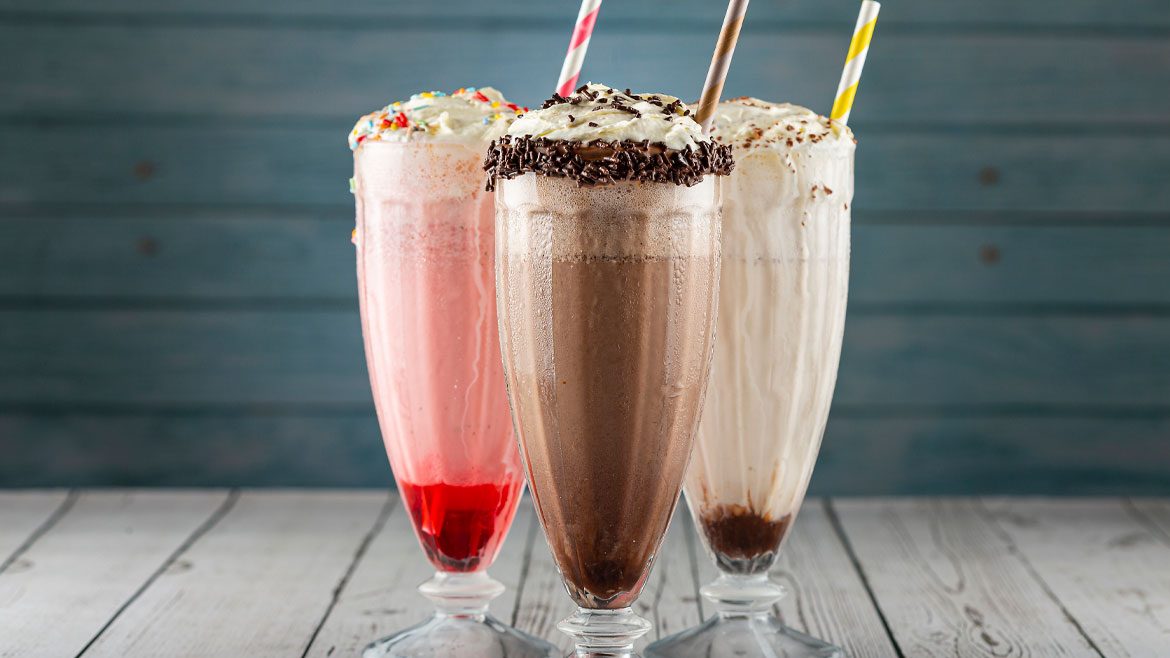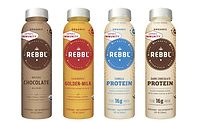Gut Reaction
Gut Reaction
BY SARAH THEODORE
Probiotics and prebiotics emerge as unlikely success story
Probiotics might once
have been considered “least likely to succeed” among functional
beverages — after all, most marketers don’t exactly dream of
creating campaigns based on bacteria and the inner workings of the
gastrointestinal tract. The “gut health” tag these products
have been given hasn’t made the job any easier. But while they might
be tough to communicate in delicate language, probiotic products are
gaining ground and consumer acceptance. According to ACNielsen, Schaumburg,
Ill., probiotic food and beverage product claims increased 141 percent in
2007 vs. 2006, and they have grown 1,466 percent during the past four
years.
“Over the past six to seven years, consumers
have become increasingly interested in healthy diets, plus they’ve
started to become sophisticated enough to understand the role of
“good” bacteria in their diets and in their bodies vs. thinking
of bacteria only as negative,” says Terri Rexroat, global product
manager of lactic cultures at Cargill Texturizing Solutions, which makes
probiotic ingredients under the Viable brand name. “For these
reasons, the popularity of probiotic-containing beverages and foods is
expected to continue growing rapidly.”
The World Health Organization defines probiotics as
“live microorganisms, which, when administered in adequate amounts,
confer a health benefit on the host.” Homeopathic medicine has long
promoted probiotics to treat intestinal and other ailments, and increasing
amounts of clinical research is being conducted to test those beliefs.
Most probiotics are bacteria similar to the
“good” bacteria naturally found in the gastrointestinal tract,
according to the National Center for Complementary and Alternative Medicine
(NCCAM) at the National Institutes of Health in Bethesda, Md.
“Friendly bacteria are vital to proper development of the immune
system, to protection against microorganisms that could cause disease, and
to the digestion and absorption of food and nutrients,” the NCCAM
says on its Web site.
“There’s always been this history of
thinking that bacteria are germs and they’re bad for you,”
explains Todd Klaenhammer, director of the Southeast Dairy Foods Research
Center. “In fact, what we’re learning now is that certain kinds
of bacteria exist with us all the time. They’re very positive for our
general health, and by eating more bacteria, they may have a beneficial
effect as well.”
Klaenhammer says much of the research being done in
probiotics has concerned their effect on gastrointestinal
issues such as side-effects from antibiotic use, ulcers caused by the Helicobacter pylori bacterium
and digestive difficulties. In addition, studies have been conducted to
determine the effect probiotics may have on allergic conditions, as well as
the gastrointestinal tract’s role in the immune system.
“In our GI tract, we have lots of bacteria that
are naturally there, and their ability to be there helps protect us from
disease, and it helps our immune system function properly,”
Klaenhammer says. “So by taking probiotic bacteria, essentially, what
you’re doing is you’re continuing to replenish those bacteria
in our gastrointestinal tract that help support what we call a healthy
state.”
Proprietary strains
While there are many types of probiotic bacteria, the
most commonly used in functional products today are the Lactobacillus and Bifidobacterium varieties. Within
those varieties a number of species and strains exist. An increasing trend
has been the use of proprietary strains of bacteria such as Dannon’s Lactobacillus casei Imunitas and Bifidus Regularis, and Yakult’s Lactobacillus casei Shirota.
Dannon’s Activia and DanActive have been
breakthrough products in the probiotic world. Activia was introduced in
2006 as a spoonable yogurt, and achieved more than $1 billion in sales.
DanActive, packaged as a 3.3-ounce beverage, followed early last year.
Dannon spokesperson Michael Neuwirth says the
company’s focus on education and clinical research has resonated with
consumers. “Globally, we’ve been researching and making
probiotic products for more than 20 years,” he says. “As the
first company to introduce probiotics to mainstream America with the launch
of Activia in 2006 and DanActive in 2007, we recognize both the need and
responsibility to educate about the benefits of probiotics and choosing
probiotic products that are clinically proven.”
The White Plains, N.Y.-based company has used Web
sites for both Activia and DanActive as educational resources about
probiotics and potential health benefits. It also created the online
“Dannon Probiotics Center” to cover the topic in detail,
including references to specific studies.
Yakult, a dairy-based probiotic drink from Japan, has
been available in the U.S. market through ethnic and specialty foods stores
for about nine years, and is making its way into mainstream retail outlets.
Yakult is based on the Lactobacillus casei Shirota bacteria, and is packaged in 2.7-ounce
bottles.
“The benefits of probiotics vary, but the
research is very promising,” says Lauren Weidelman, spokesperson for
Yakult USA, Torrance, Calif. “There are trillions of types of
bacteria in our digestive system that we know of today. Each one has its
own unique characteristics and effect on the body. For instance, a general
strain like Lactobacillus casei is quite different than Lactobacillus
casei Shirota, the studied bacteria strain
that is found in Yakult.”
The Shirota bacteria strain was named after
Yakult’s founder, who began a campaign to educate consumers in Japan
about gastrointestinal health as early as 1935. The product gained
popularity in Japan through a door-to-door delivery system that employed
“Yakult Ladies.” Weidelman says more than 47,000 Yakult Ladies
are responsible for delivering the product in Japan today, and that the
company has implemented similar strategies in Mexico, Brazil and the
Philippines.
Yakult and Dannon parent company Groupe Danone jointly
established the Global Probiotics Council to raise awareness of probiotics,
and their partnership has included research grants, meetings and symposia.
New categories
To date, most probiotics have been dairy products, but
Naked Juice, Azusa, Calif., expanded the probiotics category last year with
the introduction of Naked Juice Probiotics. The company rolled out Tropical
Mango and Very Berry juices in 10-ounce bottles that contain a strain of Bifidobacterium bacteria
and fructoollgosaccaride prebiotics. Prebiotics are ingredients derived
from plant fibers and sugars that are not absorbed by the gastrointestinal
tract but are fermented by the bacteria in the GI tract and stimulate their
growth and activity — they essentially feed the bacteria.
“What we’ve done at Naked Juice is
developed and brought to market the first 100 percent juice product with a
probiotic and a prebiotic in it,” Adam Carr, general manager at Naked
Juice, told Beverage Industry in October.
Prebiotics are not as well-known as probiotics, but
they are thought to offer a number of potential benefits, both in
conjunction with probiotics and on their own.
“Prebiotics and probiotics used together are
referred to as synbiotics, and are a natural in cultured dairy
products,” says Joseph O'Neill, executive vice president of sales and
marketing for Beneo-Orafti, Morris Plains, N.J. “In fact, prebiotics
boost the body’s own beneficial Bifidobacteria. Interestingly, a combination of prebiotics and probiotics
offers the best nutritional (and legal) defense against those who challenge
the fact that probiotics alone don’t support claims on immune or
digestive health.”
Beneo-Orafti produces inulin and oligofructose
prebiotic ingredients. In addition to use with probiotics, inulin can be
used on its own to add fiber content to a product and improve the mouthfeel
of low-fat products. Oligofructose can be used to replace some of the sugar
in a product or mask the flavors of high-intensity sweeteners. The company
also offers Orafti Synergy 1, which is a combination of oligofructose and
inulin that was formulated specifically to improve digestive health and
increase calcium absorption in the body. Other prebiotic ingredients
include polydextrose, lactulose and lactitol.
Kraft Foods recently turned to prebiotic ingredients
rather than probiotic in the formulation of Crystal Light LiveActive, a
drink mix designed to promote digestive health. The product, which contains
inulin and has 3 grams of fiber per serving, joins the LiveActive line of
cheese snacks and cottage cheese products that feature probiotic and
prebiotic ingredients.
Individualized attention
The development and production of probiotic products
requires a significant amount of care, says the Southeast Dairy Foods
Research Center’s Klaenhammer. Products must be formulated to contain
an effective number of bacteria — to the tune of millions of bacteria
per gram — and must be produced in a way that will protect the
stability and shelf life of the bacteria.
“The definition of probiotic is basically a live
microorganism that provides a health benefit, so it’s important that
products that are intending to deliver probiotic [benefits] keep those
bacteria alive over the shelf life of the product,” he says.
“That can be very difficult and it must be optimized for every
product.”
Probiotics may be easier to incorporate into beverages
than food products due to their aqueous nature, says Cargill’s
Rexroat. The company offers a number of probiotic bacteria strains,
including Bifidobacterium, Lactobacillus acidolphus, Lactobacillus johnsonii, Lactibacillus paracasei and Lactobacillus rhamnosus.
The pH levels of a beverage also are important to
consider, she adds. Beverage products often fall below pH level 4, which
can be detrimental to probiotic cell viability. “It’s possible
that encapsulation of the cells to protect them from the harsh environment
could help address this hurdle,” she says.
“In addition, probiotics will not survive
temperatures above 120 F, so heat treatment such as for aseptic packaging
will kill the cells,” she says. “In this case, it would be
necessary to identify a means to add the probiotics after the heat
treatment step. This can require a significant process change and possible
capital investment, but it is frequently not insurmountable.”
In 2005, Chr. Hansen and Tetra Pak teamed up on a
system that allows processors to do just that. Making use of Tetra
Pak’s Flex Dos aseptic dosing machine, the companies devised a way to
add probiotic bacteria right before filling to prevent heat processing from
destroying the bacteria.
As it is with probiotic ingredients, it is advisable
to use prebiotic ingredients at a pH level of 4 or higher to reduce the
chance of hydrolization, says Beneo-Orafti’s O'Neill. However, he
says, “Prebiotics are successfully used in low-pH refrigerated orange
juice to support a good source of fiber claim without significantly
affecting the viscosity or mouthfeel of the product.”
More research to come
As probiotics gain prominence, more studies are being
conducted to determine their effectiveness and exactly how they might work
in the body. A number of those studies have
hit the news headlines in recent months. The British
Journal of Sports Medicine published an
Australian study last month that found long-distance runners who took the
probiotic Lactobacillus fermentum cut in half the number of days they were affected by cold
symptoms, compared with a placebo group. The researchers cautioned,
however, that the results could have been affected by the athletes’
low body mass index and the same results may not be applicable to a less
fit general population.
Another study conducted by the Imperial College London
and published in Molecular Systems Biology found mice that were fed probiotics had different
levels of some chemicals in their systems, possibly signaling a change in
the overall dynamics of the gastrointestinal system.
On the flip side, a Dutch study reported last month in
the medical journal Lancet found probiotics might have a detrimental effect on people
with severe pancreatitis. The researchers were looking for a beneficial
effect from the supplements, but said they found probiotics should not be
given to patients with the severe form of the illness in the study.
According to industry experts and the National
Institutes of Health’s NCCAM, the effects of probiotics can depend on
everything from the specific variety and strain of bacteria, to processing
conditions, to the individual taking the supplement.
“Effects found from one species or strain of
probiotics do not necessarily hold true for others, or even for different
preparations of the same species or strain,” the NCCAM says on its
Web site.
The group emphasizes that, “Much more scientific
knowledge is needed about probiotics, including about their safety and
appropriate use.”
With the increased interest in probiotics, and the
booming health and wellness category overall, it seems likely that research
will only continue to grow.
Looking for a reprint of this article?
From high-res PDFs to custom plaques, order your copy today!



